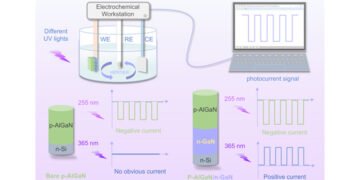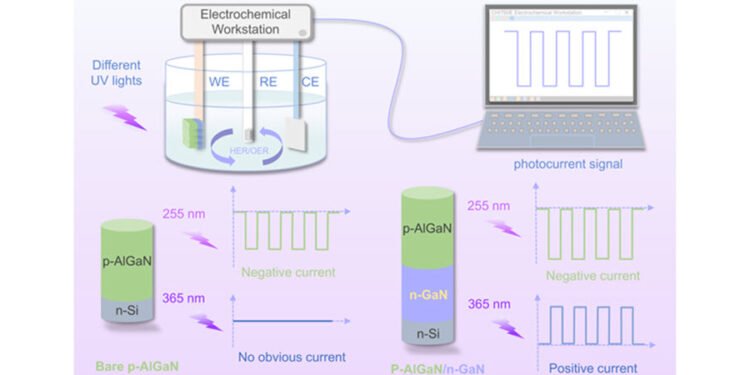A New Design for Ultraviolet Photodetector, Using a Multilayered Nanostructure for Enhanced UV Detection and Sensitivity for Environmental Modification.
Ultraviolet (UV) light detection can revolutionize industries such as civil engineering, military defense, atmospheric research and medical research. The future of electronics depends entirely on energy-efficient devices that can operate independently, making the development of UV photoelectric detectors critical. These detectors come in two main types: photoconductive and photovoltaic, each with unique advantages and applications.
Photoconductive detectors rely on the change in conductivity of semiconductors under UV light, but they require external power, which limits their practical applications. Good photovoltaic detectors convert optical signals into electrical signals without the need for external light, but they also have low photosensitivity, so external power is always required. Additionally, traditional solid-state UV detectors are complex to manufacture and lack power or cost. A new photoelectrochemical ultraviolet photodetector (PEC UV PD) device has been developed to detect UV light by using a chemical reaction that produces a light signal when exposed to UV light. But most can detect only one type of ultraviolet light.
As reported in Advanced Photonics Nexus, researchers from Nanjing University of Posts and Telecommunications (NJUPT) and Nanjing University have recently developed a UV PD PEC that can detect two types of ultraviolet light using a unique nanostructure. separate which consists of different levels. This design makes the detector sensitive to changes in the environment, and the researchers can improve the detector’s performance by changing its height. This new design provides a good strategy for the development of multifunctional optoelectronic devices.
The research team used an aluminum gallium nitride (p-AlGaN/GaN) nanostructure as an electrode in a three-electrode system to study how it detects light. They found that small GaN semiconductor nanowires are important for controlling the electric current and reversing the direction of the photocurrent in response to different types of light. They found that the nanowires act as an absorber under 365 nm light while also serving as an electron donor when exposed to 255 nm light, which helps regulate photoreactivity. at different wavelengths.
The PEC UV PD design is able to distinguish between different wavelengths by using layered AlGaN/GaN nanowires instead of bare AlGaN nanowires, achieving photo current polarity reversal at two different points. This makes it very sensitive to changes in the environment, allowing easy processing of the photo response from external light and pressure. In addition, by adding platinum and surface modification to the PEC PD, researchers can improve the photoresponse and achieve an ultrafast response speed of 20 ms to 255 nm light.
According to Dunjun Chen, Professor of Electronic Science and Engineering and one of the corresponding authors of the work, “We focused on the importance of the GaN part in this process and showed how it affects the process Chen adds, “The self-contained PEC photodetector system provides a new way to understand the transport process in AlGaN/GaN nanowire PEC, which may lead to the development of even faster advanced optoelectronics in the future.
This breakthrough highlights the potential of manipulating nanowire structures and surface materials to improve the multifunctional performance of PEC PDs and may open the way to more efficient and effective devices that can be used in ‘many applications.
Source: SPIE





































